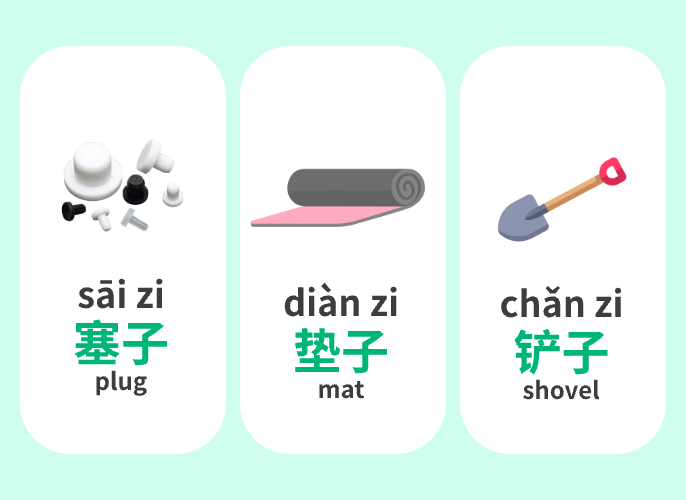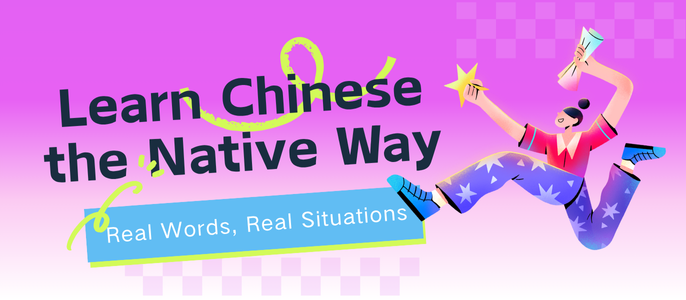Hot Articles
Mastering Chinese Greetings: How to Say 'Hi' in Chinese and Impress Locals!
learn Chinese Greetings

Whether you're planning a trip to China or simply wish to connect with Chinese-speaking friends, mastering greetings opens doors to meaningful interactions. Greeting someone in Chinese isn't just about language; it's a cultural bridge that conveys respect and curiosity. Imagine walking into a bustling market or joining a family gathering and confidently saying “你好” (nǐ hǎo) with warmth and sincerity. This small gesture can leave a lasting impression, demonstrating your appreciation for their language and customs.
In this article, we'll explore not only basic greetings but also subtle nuances to enhance your communication. From formal introductions to casual exchanges, discover how to navigate diverse social settings and stand out as someone who values genuine connection. Ready to make new friends and feel at home in Chinese-speaking environments? Let's begin!
Importance of Greetings in Chinese Culture
Greetings in Chinese culture carry profound depth and significance, extending far beyond mere word exchange. A greeting is not just a formality—it expresses respect, goodwill, and acknowledgment of the other person’s presence. In China, where social harmony and relationships (known as 关系 guānxi) are paramount, how you greet someone can shape the entire dynamic of your interaction. A warm, respectful greeting opens doors to new friendships, business opportunities, and deeper connections.
Understanding these greetings also means recognizing the cultural values they embody. For the Chinese, a proper greeting reflects one’s upbringing and cultural awareness, serving as a subtle yet powerful indicator of respect for tradition and social norms. Thus, mastering Chinese greetings isn’t solely about language; it’s about cultural immersion and demonstrating genuine interest and reverence for the culture. This sensitivity profoundly enriches interactions and leaves enduring positive impressions.
The significance of greetings extends prominently to the workplace, where using correct titles and respectful language influences professional relationships. In business settings, a thoughtfully delivered greeting establishes rapport and conveys professionalism. By understanding and practicing proper greetings, you show respect while paving the way for harmonious and successful interactions—both personally and professionally.
Basic Chinese Greetings: An Overview
Chinese greetings range from simple to nuanced, shaped by context and relationships. The universal standard is "你好" (nǐ hǎo)—meaning "hello"—suitable for most situations: first meetings, friendly encounters, or professional settings. It’s an efficient way to acknowledge others and initiate conversation.
For formal contexts, "您好" (nín hǎo) uses the respectful pronoun "您" (nín) instead of "你" (nǐ). This version honors elders, superiors, or those deserving extra deference, reflecting your grasp of social hierarchy—a cornerstone of Chinese etiquette.
Time-specific greetings add thoughtful touches:
- "早上好" (zǎo shang hǎo): Good morning
- "下午好" (xià wǔ hǎo): Good afternoon
- "晚上好" (wǎn shang hǎo): Good eveningUsing these demonstrates attentiveness and cultural awareness.
Pronunciation Guide: 'Hello' in Mandarin
Mandarin’s tonal nature makes pronunciation critical. "你好" (nǐ hǎo) combines:
- "你" (nǐ): Rising tone (like an English question pitch ↗).
- "好" (hǎo): Falling-rising tone (voice dips then rises ↘↗).
Practice tip: Isolate each syllable first. Repeat "nǐ ↗" until steady, then master "hǎo ↘↗". Finally, blend smoothly into "nǐ hǎo". Regular tonal practice prevents misunderstandings—e.g., mispronouncing "好" (hǎo) could accidentally say "号" (hào) ("number").
Additionally, understanding the phonetic structure of Mandarin can help you with pronunciation. Mandarin is a tonal language, meaning that the pitch or intonation used when pronouncing a word can change its meaning. There are four main tones in Mandarin: high level, rising, falling-rising, and falling. Using the correct tones when saying "你好" is crucial, as incorrect tones can lead to misunderstandings. Practice regularly with native speakers or use language learning apps that provide tonal feedback to improve your accuracy.
Regional Variations Across China
While "你好" (nǐ hǎo) works nationwide, local greetings add authenticity:
- Northern China: "嗨" (hāi)—a casual "hi" adopted from English, common among urban youth.
- Cantonese regions (Guangdong/Hong Kong): "你好" (néih hóu) with distinct tones.
- Shanghai: "侬好" (nóng hǎo) in Shanghainese.
Insight: Though Mandarin suffices, using local dialects can endear you to the local population and demonstrate a deeper level of cultural appreciation. Each region has its own unique linguistic characteristics, and familiarizing yourself with these can enrich your travel experiences and interactions.
Common Situational Greetings: When and How to Use
Context is key when it comes to greetings in Chinese culture. Different situations call for different greetings, and knowing when and how to use them can make your interactions more appropriate and respectful. For formal occasions, such as business meetings or official events, "您好" (nín hǎo) is the preferred greeting. It shows deference and respect, particularly when addressing superiors or elders.
In casual settings, such as meeting friends or peers, "你好" (nǐ hǎo) is perfectly acceptable. It is friendly and approachable, making it suitable for everyday use. For more intimate or familiar interactions, you might use "嗨" (hāi), especially among younger people or in informal gatherings. This greeting is relaxed and easy-going, reflecting a close relationship or casual environment.
Time-specific greetings are also important in Chinese culture. Using "早上好" (zǎo shàng hǎo) in the morning, "下午好" (xià wǔ hǎo) in the afternoon, and "晚上好" (wǎn shàng hǎo) in the evening can show your attentiveness and consideration for the time of day. Additionally, during special occasions such as the Chinese New Year, specific greetings like "新年好" (xīn nián hǎo) or "恭喜发财" (gōng xǐ fā cái) are used to convey festive wishes. Being aware of these situational greetings can enhance your cultural competence and make your interactions more meaningful.
Non-Verbal Communication: The Role of Body Language
In Chinese culture, greetings extend beyond words. Body language—bows, eye contact, and gestures—conveys respect and sincerity. A slight bow or nod, especially when meeting elders or superiors, signals humility. Eye contact should be present but gentle; prolonged intensity may seem confrontational. A warm smile softens interactions, making you approachable.
Handshakes are common in formal settings but differ from Western norms: keep them brief and moderately firm. Overly strong or extended grips feel aggressive. Combining these non-verbal cues with verbal greetings creates harmonious interactions rooted in mutual respect.
Tips for Practicing Your Chinese Greetings
1. Language Exchange
Partner with native speakers via apps (e.g., Tandem) or local groups. Real-time feedback refines tones and cultural nuances.
2. Digital Tools
Use apps like HelloChinese or Duolingo for tonal drills. Supplement with Chinese media (films, music) to absorb greetings in context.
3. Daily Integration
- Greet your mirror with "早上好" (zǎo shang hǎo).
- Use "你好" (nǐ hǎo) with friends.Consistency builds muscle memory and confidence.
Cultural Etiquette: Key Avoidances
Understanding what to avoid when greeting in Chinese culture is just as important as knowing the proper greetings. One common mistake is using overly casual language or slang in formal situations. For instance, using "嗨" (hāi) in a business meeting or with elders can come across as disrespectful. It’s important to gauge the formality of the situation and choose your greeting accordingly.
Another point to be mindful of is the use of physical contact. While handshakes are common, other forms of physical greeting, such as hugging or kissing on the cheek, are generally not practiced in China, especially with people you are not very familiar with. These gestures can make people uncomfortable and should be avoided unless you are very close to the person and sure about their comfort level with such forms of greeting.
Avoiding direct, intense eye contact is also crucial. While it’s important to look at the person you are greeting, staring can be seen as rude or confrontational. A gentle, respectful gaze is appropriate. Additionally, pay attention to your tone and volume. Speaking too loudly can be perceived as aggressive, while a friendly and calm tone is usually well-received. By being aware of these cultural nuances, you can ensure that your greetings are respectful and appropriate.
Key Improvements:
Mastering Chinese greetings is more than just a linguistic achievement; it is a gateway to building authentic connections and showing respect for a rich and ancient culture. By learning how to say "hi" in Chinese and understanding the context and etiquette surrounding greetings, you are taking a significant step towards meaningful interactions. Whether you’re traveling to China, engaging with Chinese-speaking friends, or conducting business, your efforts to greet others in their native language will not go unnoticed.
The journey to mastering Chinese greetings involves patience, practice, and a willingness to immerse yourself in the culture. It’s about more than just words; it’s about the tone, body language, and cultural awareness that accompany those words. By combining verbal and non-verbal communication, being mindful of cultural nuances, and utilizing available resources, you can enhance your language skills and leave a lasting, positive impression.
As you continue to learn and practice, remember that every greeting is an opportunity to connect and show respect. Embrace the learning process, celebrate your progress, and enjoy the rich cultural exchanges that come with it. With each "你好" (nǐ hǎo) and "您好" (nín hǎo), you are not only mastering a language but also building bridges of understanding and friendship.











